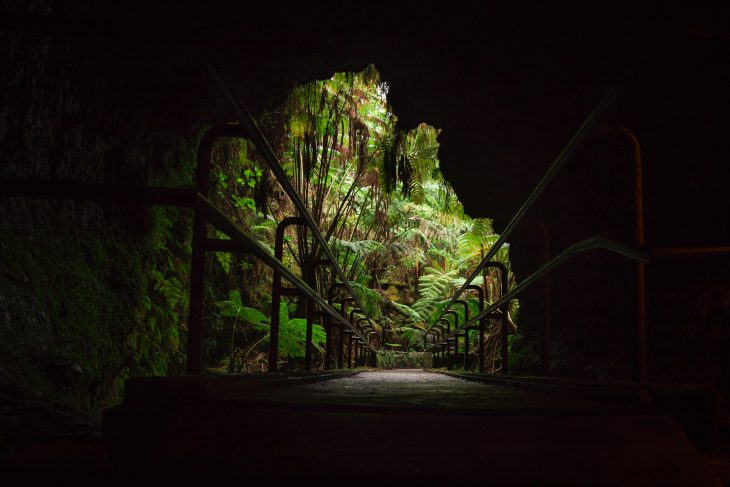Hawaii is home to many strange and beautiful creatures, including some nestled in a large cluster of caves formed from old lava tubes. Since these animals live in a unique underground environment, they have evolved in certain ways to survive. Some of these animals are blind, relying on other methods to “see” their surroundings. Bats use one such method called echolocation which helps an animal sense where an object is by relying on echoes produced by soundwaves!
Cave animals move very, very slowly to both conserve energy and take advantage of limited energy resources. These traits help them to survive in caves, but also make them defenseless. What if something new invaded the caves? Something that these creatures were powerless against? Something that could both see and move quickly, and has an uncanny ability to explore all kinds of nooks and crannies?
This something is Rattus rattus, commonly known as the black rat or house rat. R. rattus is a species of rat that the Global Invasive Species Database has recognized as “one of the most invasive species worldwide”. These pesky rats with a yearning to explore, have found the amazing system of lava tube caves in Hawaii and are now leaving their mark.
Researchers from the Bernice P. Bishop Museum and Hawaii Community College in Hilo, Hawaii set out to explore how rats affect these fragile ecosystems. They collected and sifted through 40 years of observations and reports made by cave scientists, researchers, and explorers, which led them to discover just how much damage R. rattus has been inflicting.
Just by exploring these caves, the rats bring in material that does not belong there. This unnatural cave material can then invite other outside creatures in. These rats also pose a danger to the native cave dwellers, eating both them and their food sources. The native cave dweller diet includes rarities such as the exotic native plants that grow near the entrances of the caves and smaller creatures residing in the caves. When rats compete for those foods, they usually win, because they have no natural predators.
The trouble does not stop there. Overlong periods of time, dirt and dust pile up in caves. These sediments store a detailed record of life in the caves. Animals and plants that can get trapped in this dust and dirt end up being buried and layered on top of each other in the order that they visited the cave. The older plants and animals are at the bottom, with newer ones sprinkled on top. And it is not only plants and animals that can be found in these archives; the people who used to live near these caves created tools, some of which may be found in these caves. But with the intrusion of rats, this amazing archive is getting displaced and tracked around the cave systems, making it harder to interpret!
To help defend against the rats, the park authorities moved one of the main trails. This popular trail used to take its hikers very close to the entrance of a cave, and rats would follow the path that formed from dropped trail mix and other snacks, leading them directly to the cave. They hypothesized that the rats will be more interested in following the other trails of food and snacks left by us human adventurers.
As for what to do about caves that rats have already invaded, the solution is a little trickier. What can be done to keep the rats away from the caves? Getting rid of the rats that are already in caves without affecting all of the unique plants and animals that we are trying to protect is a puzzle. Researchers are encouraging others to “record their observations of rodents in caves” to bring forth more knowledge and hopefully in the future counteract these pests.


